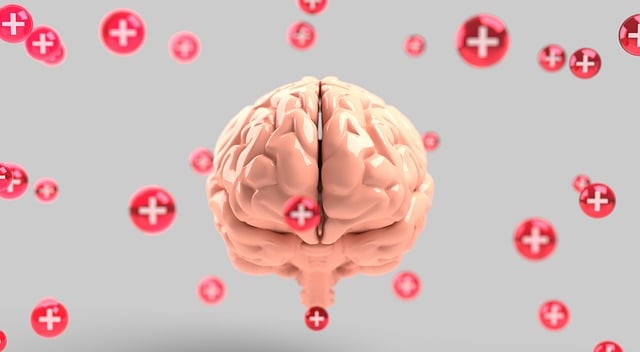Castle Rock Obsessive Compulsive Disorder (CR-OCD) therapy combines tailored cognitive-behavioral therapy (CBT), risk management planning, and positive thinking exercises to break the cycle of OCD. These strategies aim to improve mental wellness, restore control, and enhance the ability to lead fulfilling lives. Positive thinking techniques, crucial for CR-OCD coaching programs, empower individuals to challenge negative thoughts, reduce anxiety, and reframe them with optimistic affirmations through structured daily routines and practice. This approach leads to significant improvements in mental fortitude by fostering better self-communication and resilience.
“Castle Rock Obsessive Compulsive Disorder (CR-OCD) significantly impacts individuals’ daily lives, characterized by intrusive thoughts and repetitive behaviors. This article delves into CR-OCD therapy, exploring how positive thinking exercises play a pivotal role in managing symptoms. We’ll guide you through the process of implementing effective techniques to overcome CR-OCD, offering lasting relief and an improved quality of life. Discover practical strategies for a transformative journey towards mental well-being.”
- Understanding Castle Rock Obsessive Compulsive Disorder (CR-OCD) and Its Impact
- The Role of Positive Thinking Exercises in CR-OCD Therapy
- Implementing Effective Positive Thinking Techniques for Lasting Results
Understanding Castle Rock Obsessive Compulsive Disorder (CR-OCD) and Its Impact

Castle Rock Obsessive Compulsive Disorder (CR-OCD) is a mental health condition that significantly impacts an individual’s daily life and overall well-being. Unlike traditional OCD, CR-OCD is characterized by intense, intrusive thoughts and behaviors that are often centered around specific themes or obsessions related to safety and order. This disorder can lead to a cycle of compulsive actions, leaving individuals feeling trapped and overwhelmed. The impact of CR-OCD extends beyond the individual; it affects relationships, work performance, and overall mental wellness.
Effective Castle Rock Obsessive Compulsive Disorder therapy involves specialized approaches such as cognitive-behavioral therapy (CBT) tailored to address these unique challenges. Mental health professionals play a crucial role in managing CR-OCD through risk management planning, which aims to prevent burnout and ensure sustainable support for both the patient and the therapist. By implementing evidence-based strategies, professionals can help individuals break free from the grip of OCD, fostering improved mental wellness and enhancing their ability to lead fulfilling lives.
The Role of Positive Thinking Exercises in CR-OCD Therapy

Positive thinking exercises play a pivotal role in Castle Rock Obsessive Compulsive Disorder (CR-OCD) therapy, offering a powerful tool to combat intrusive thoughts and compulsions. By focusing on shifting one’s mindset towards more positive and realistic beliefs, these exercises aim to improve emotional regulation and reduce the impact of anxiety. Through regular practice, individuals with CR-OCD can learn to challenge and reframe negative thought patterns, thereby decreasing the hold that obsessive thoughts have over their lives.
Incorporating positive thinking into CR-OCD therapy involves a multi-faceted approach. Communication strategies are utilized to help patients express their feelings in healthy ways, fostering open dialogue about fears and anxieties without resorting to compulsive behaviors. Crisis intervention guidance is also integrated, equipping individuals with coping mechanisms to manage intense emotional distress and avoid triggers that might escalate symptoms. Ultimately, these exercises empower people struggling with CR-OCD to take control of their mental health journey.
Implementing Effective Positive Thinking Techniques for Lasting Results

Implementing effective positive thinking techniques is key to achieving lasting results in mental wellness coaching programs development. For individuals dealing with conditions like Castle Rock Obsessive Compulsive Disorder Therapy, integrating specific strategies into daily routines can significantly enhance overall well-being and quality of life. A structured approach involving simple yet powerful communication strategies can help individuals reframe negative thoughts, fostering a more optimistic mindset. By combining these techniques with anxiety relief practices, participants can experience profound transformations in their mental fortitude.
The process begins with identifying triggers and unhelpful thought patterns. Once recognized, individuals can employ cognitive restructuring techniques to challenge and replace negative thoughts with positive affirmations. This shift requires commitment and practice but offers substantial benefits. Over time, these strategies become ingrained, promoting better communication with oneself and others, thus creating a supportive environment for personal growth and resilience.
Positive thinking exercises have proven to be a powerful tool in managing and overcoming Castle Rock Obsessive Compulsive Disorder (CR-OCD) symptoms. By implementing these techniques, individuals can gain control over their thoughts and emotions, leading to improved mental well-being. Through consistent practice, the strategies outlined in this article offer a promising path towards effective CR-OCD therapy and lasting positive outcomes.














